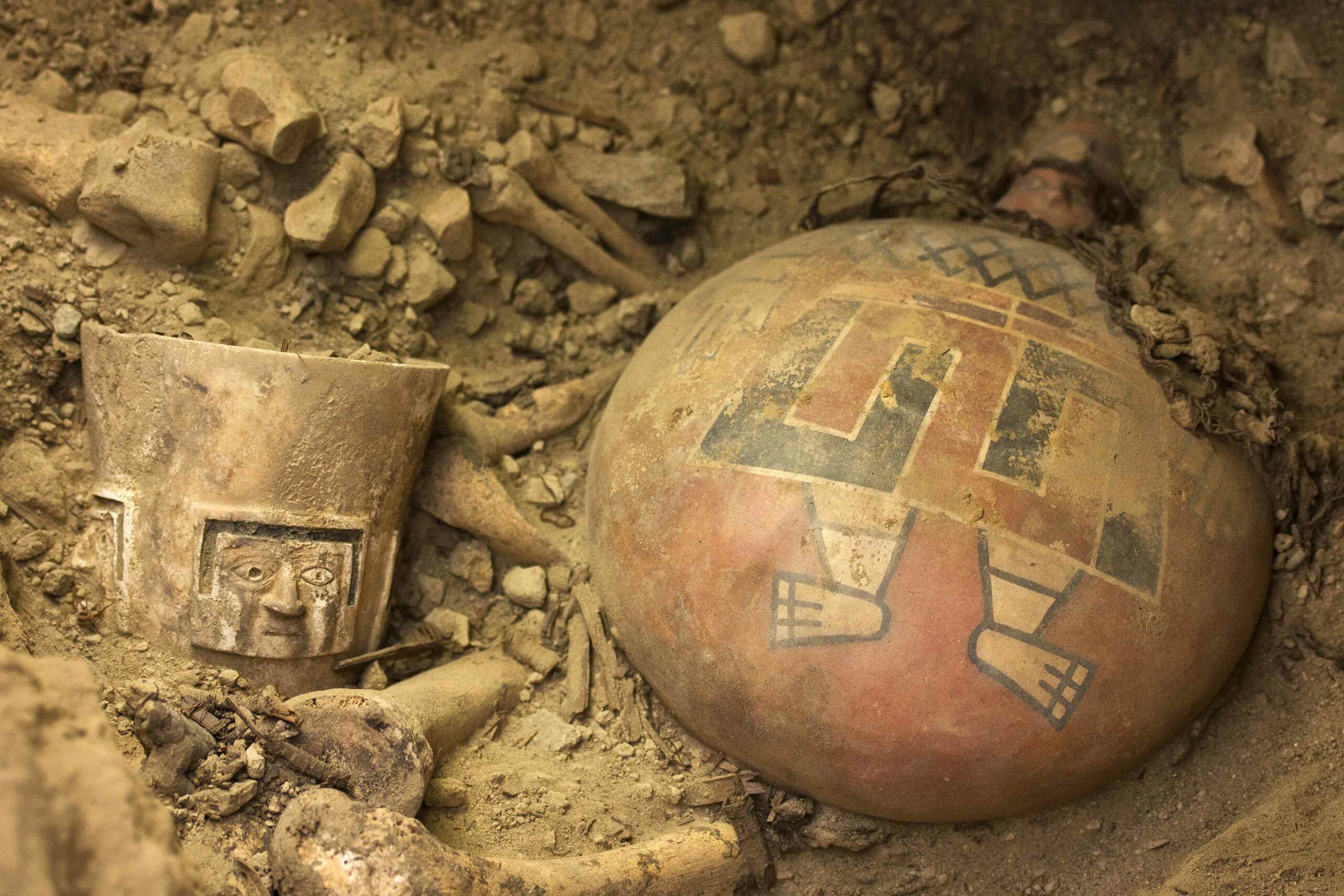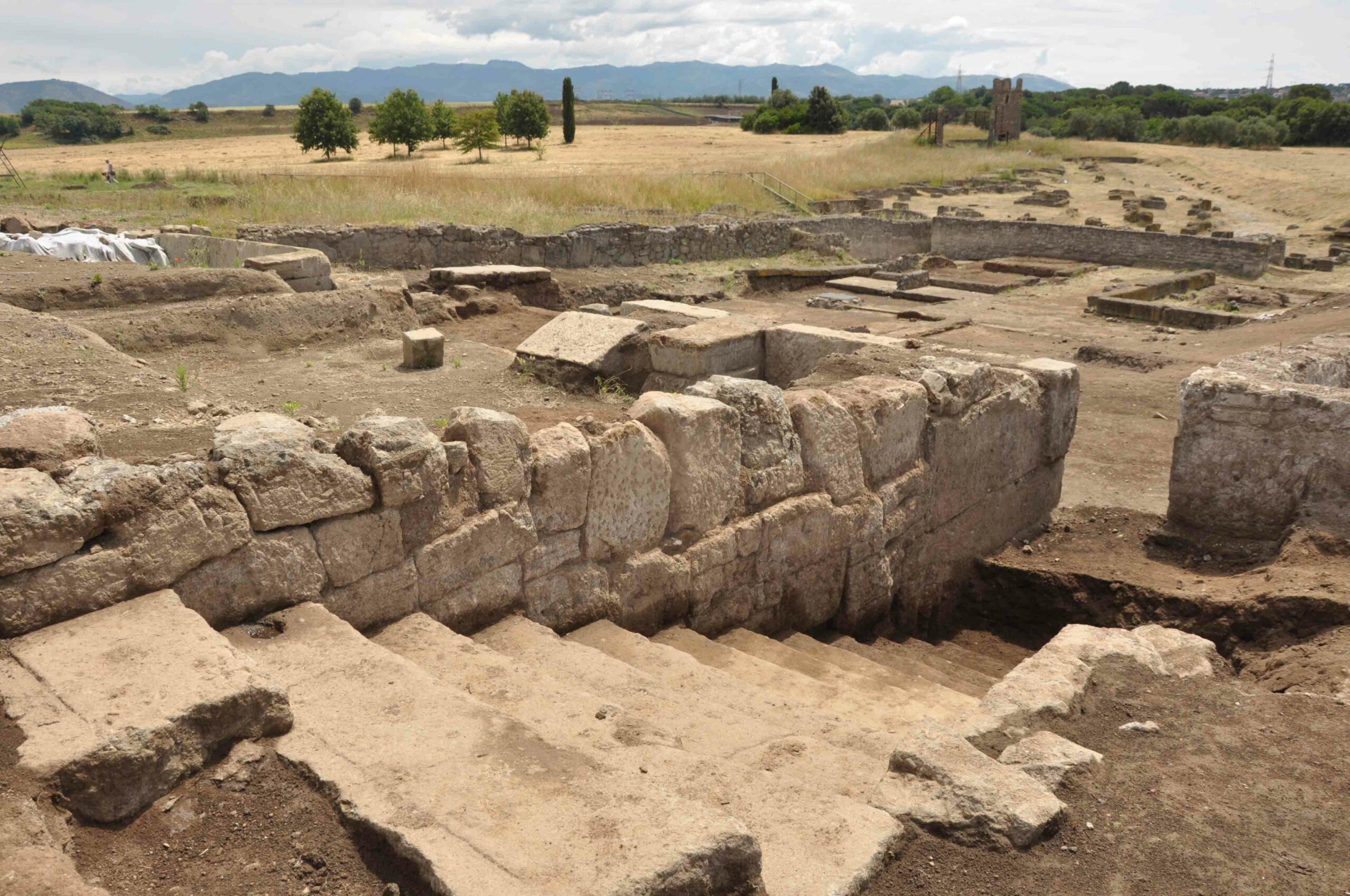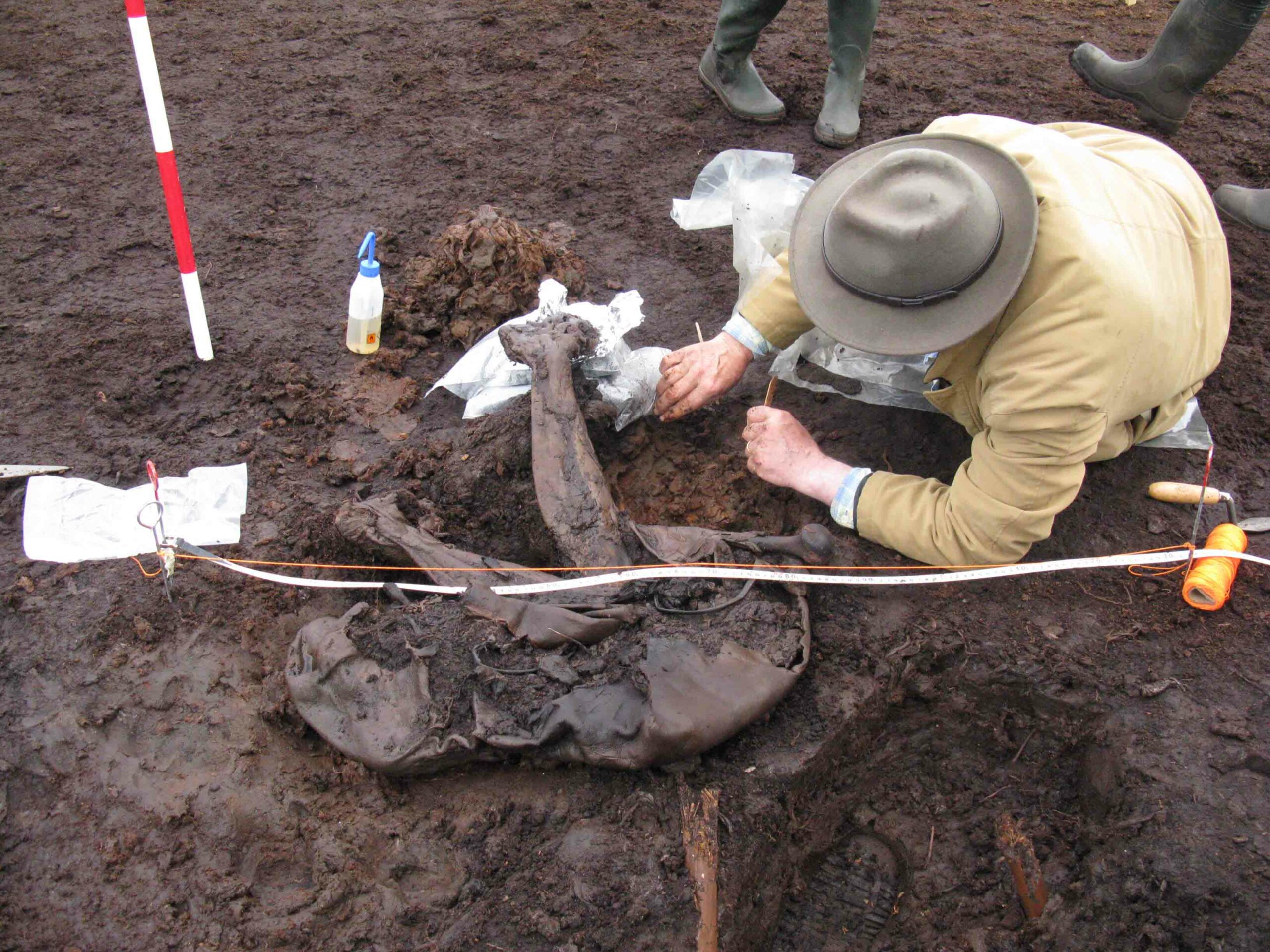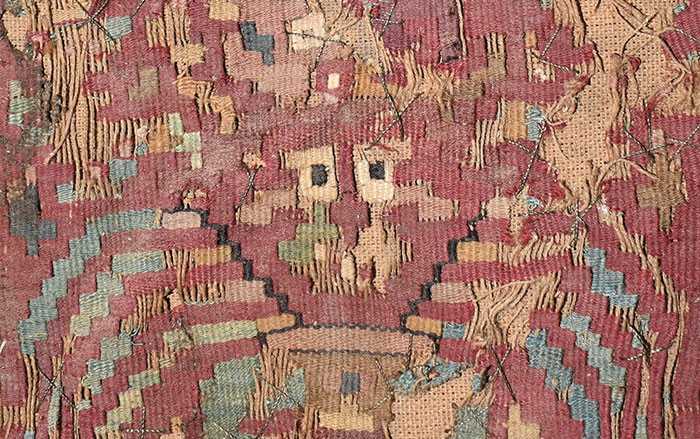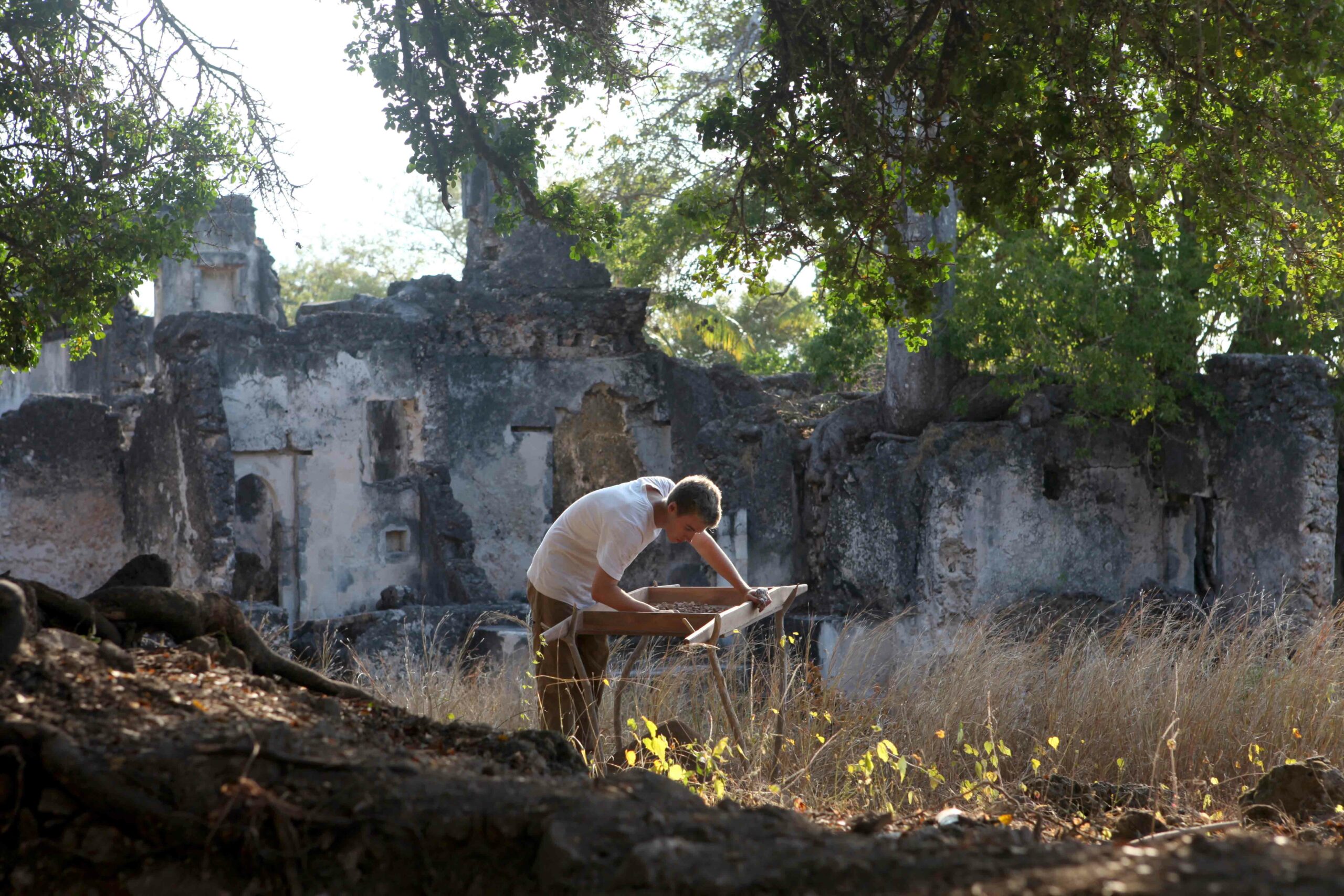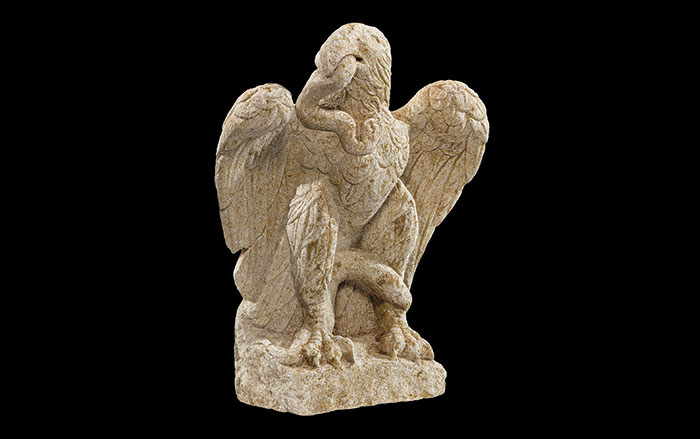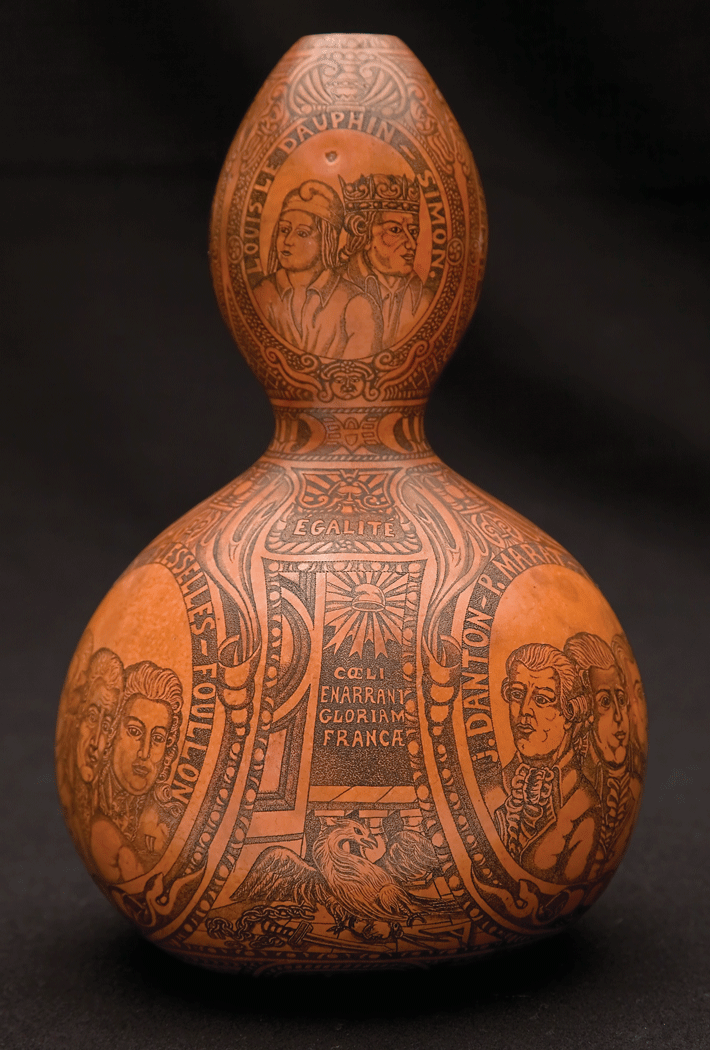
At the center of Castillo de Huarmey in northern Peru is a burial complex where Milosz Giersz and a team of archaeologists from the University of Warsaw and the Pontifical Catholic University of Peru uncovered chambers containing the remains of three, or possibly four, royal women of the Wari Empire. They were accompanied by 40 noblewomen buried in a sitting position, seven sacrificed individuals whose bodies had been thrown over the seated burials, and more than 1,300 artifacts, including ear ornaments typically worn by royal men and weaving tools made of gold and silver.
“This is the first time in an archaeological excavation that we have found a tomb full of prestige goods related to Wari women,” Giersz says, adding that cotton and camel-wool textiles also found as grave goods were considered by the Wari to be more valuable offerings than gold. Giersz estimates that the tomb dates to A.D. 750. Burials of royal men have been found at the site, but thus far not in chambers of this size. The tomb could answer questions about the roles that women played at the highest levels of Wari society.


